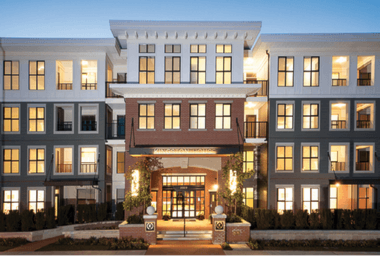SOUTH SURREY — Harvard Gardens is an upscale community of two-bedroom apartments inspired by East Coast architecture with brickwork, natural-wood soffits and black metal detailing. There's also the Rowing Club, a private resident clubhouse with over 9,000 square feet of resort-style amenities, including an outdoor pool and spa, gymnasium, fitness facilities and screening room.
Shaughnessy? Arbutus? Kerrisdale? Point Grey? Nope.
Welcome to South Surrey.
The gentrification of this area has been ongoing for years, but only lately has the Lower Mainland started to take real notice of the demographic change. Previously made up of mostly underdeveloped lots of agricultural land, South Surrey has now become one of the hottest places for real estate development in the province. As Surrey transforms into a major metropolitan hub, it is cultivating its own upper-crust milieu. Matt Morrow, a real estate agent with Re/Max who lives in Ocean Park, said South Surrey is undergoing a swift metamorphosis.
“Detached prices are rising due to low interest rates and a lack of supply,†Morrow said. “You're getting a lot of the older view homes being knocked down and newer homes are being built. And we're starting to see that a lot. If you drive down any of the streets on the slope, houses are coming down and being rebuilt.â€
Median prices for detached homes in South Surrey/White Rock jumped 11% to $860,000 and townhomes jumped 13.6% to $465,000 between June 2013 and June 2014, according to the Fraser Valley Real Estate Board (FVREB). But sales are where the numbers are climbing the most. The number of detached home sales in South Surrey/White Rock rose 32% and townhouse sales jumped 121.9% since June of last year. This is due largely to townhome developments throughout Morgan Heights and South Surrey that were completed this year and in 2013.
Property values for detached homes jumped double digits since June 2013 in areas such as Grandview/Morgan Crossing (8.7%), Hazelmere (12.2%) and Pacific Douglas (10.2%). FVREB president Ray Werger said the increases are the result of Surrey's rapid expansion, in which 1,200 people are added to the city's population each month.
“It's just indicative of what's going on in the valley in general,†he said. “If you build it, people will come, and definitely it's a desirable area. You're close to the border and the ocean, an easy drive to the airport. And it's got a really diverse mix of housing options.â€
Morrow pointed to Morgan Crossing, just east of Highway 99 and north of 24th Avenue, which typifies the gentrification process going on. Commercial development has brought large chain stores like WalMart (Nasdaq:WMT) and Home Depot (Nasdaq:HD) and even some high-end boutiques to the area.
“You've now got all levels of shopping within the peninsula so there's really no need to go anywhere unless you want to hit a major mall. So the need to leave is gone, or going quickly.â€
However there's one aspect of South Surrey that is failing to keep pace with the rapid growth – transportation. Werger said South Surrey is almost growing too fast for its own good.
“You need the [population] numbers for public transportation,†he added. “That's the biggest thing. If you talk to TransLink, it's kind of like a chicken-and-egg thing. You'd love to have it right away, but you need the numbers to support the cost of it because it's so costly.â€
Either way, Werger said when he's driving his car through South Surrey, whether in bumper-to-bumper rush-hour traffic or not, one thing's for certain.
“What I'm surprised with is just how rapid the growth seems to be. Even as a working realtor, just driving around – which I'm doing all the time – you drive into a neighbourhood down there and go, ‘Holy geez, when did that happen? That wasn't there last year.'â€
For more stories from Business in Vancouver, click here.
